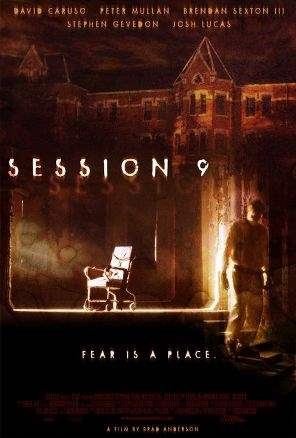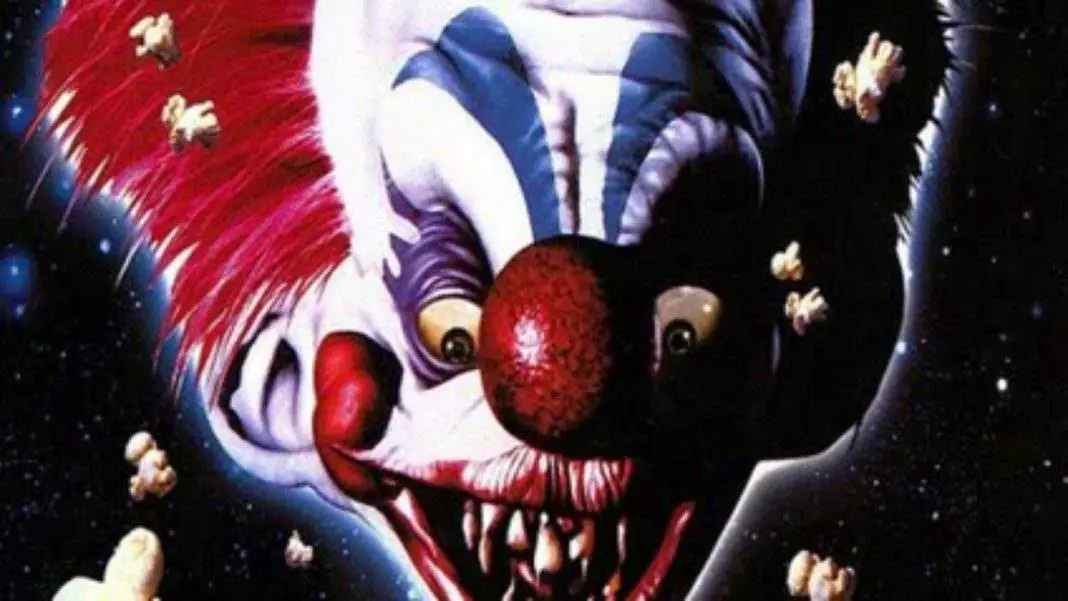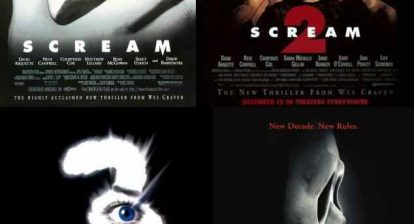[soliloquy id=”1613″]
It’s hard to believe that Brad Anderson’s Session 9 is almost fifteen years old. Many of the horror films from the era in which it was made have not stood the test of time, but this one has and it is easy to see why. It’s one of the most atmospheric, psychologically unsettling films ever made. It’s easy, in some ways, to capture the feeling of a haunted house on screen. What’s harder is to recreate the feeling of a place that isn’t haunted, a place that makes your skin crawl in a way you can’t explain for reasons you can’t understand. That’s the sort of thing Session 9 was made to tap into, and it does so beautifully.
In terms of scares, Session 9 is on par with The Exorcist. The difference is that this movie is given almost nothing to work with. There’s a vaguely supernatural atmosphere, but nothing supernatural happens, at least not in the strictest sense. Like I said, this isn’t a haunted house movie. Instead, it’s about a small group of guys in an isolated location that—while it appears vast from the outside—is definitely claustrophobic. These people are not trapped with an otherworldly force, or the ghosts of the hospital’s former patients. They are trapped inside with themselves and, ultimately, that proves to be scarier.
Because it is a project carried by the characters, the actors and the casting are really important, but every one of them pulls the job off with ease. David Caruso appears to be our voice of reason at first but we quickly come to understand that he is one of the most unhinged of the bunch.
In a sense, however, the institution is haunted by the ghosts of the former patients. They do not appear in a paranormal sense, but instead through archival tapes discovered by Mike, the team’s law school dropout who considers himself an expert on the asylum. These tapes are probably the most unnerving part of the whole movie, even scarier than the actual murders which are—more than anything—simply there to add weight to the story. These tapes consist of a series of sessions with a patient named Mary, who suffers from a dissociative identity disorders. We get no flashbacks, no visual element, only the audio of interviews with Mary and her other personalities.
This is bold and masterful work, really showing just how little it takes to create genuine scares when you know what you’re doing. Mike goes through each session obsessively, naturally building to session 9, in which the doctor speaks with Mary’s most private personality, Simon. While we don’t get the complete details of what Mary did at first, it’s revealed that she stabbed her brother to death and it was the Simon personality that either committed the murder or convinced Mary to do it.
Like most good works of art, there’s a lot of room for interpretation in Session 9. It could, I suppose, be argued that there is a vaguely supernatural element to the movie. The Simon presence that drove Mary to kill could still be in the asylum, could be driving Gordon to murder his crew one by one. I think, though, that it goes a little deeper than that, which is fitting. Obviously, I’m not saying possession movies can’t be smart. But Session 9 is smart for avoiding the typical trappings of possession and instead focusing on the psychological element, especially for a movie that—given its location—could actually have fallen into generic territory pretty easily. Instead of being an actual presence, Simon could simply represent the little slice of evil that lies within absolutely everyone. Gordon, the murderer, is the most stable person at the onset of the film. Naturally, that appearance is deceiving and his cool exterior breaks more and more, revealing the chaotic personality underneath.
Each of Mary’s personalities live in a different location inside of her body, according to her. They live behind her eyes, or behind her tongue. When Simon finally speaks, the doctor asks him where he lives and his response is “I live in the weak and the wounded.” These are the last lines of the film as well and while they can appear anticlimactic, the response actually sums up what the movie is largely about. Simon is the darkness inside of everyone, but this particular kind of darkness—even in a strictly psychological manner—will prey on the vulnerable and the desperate. It happened with poor, confused Mary and it happened to Gordon, who was crumbling under the stress of his marriage and fatherhood when his own personal Simon came along.
Session 9 is an exceptionally intelligent movie and it’s no wonder that it is still going strong after almost fifteen years. This is a powerful film, haunting in the truest sense, brilliantly showcasing what psychological horror can pull off at its absolute best.






